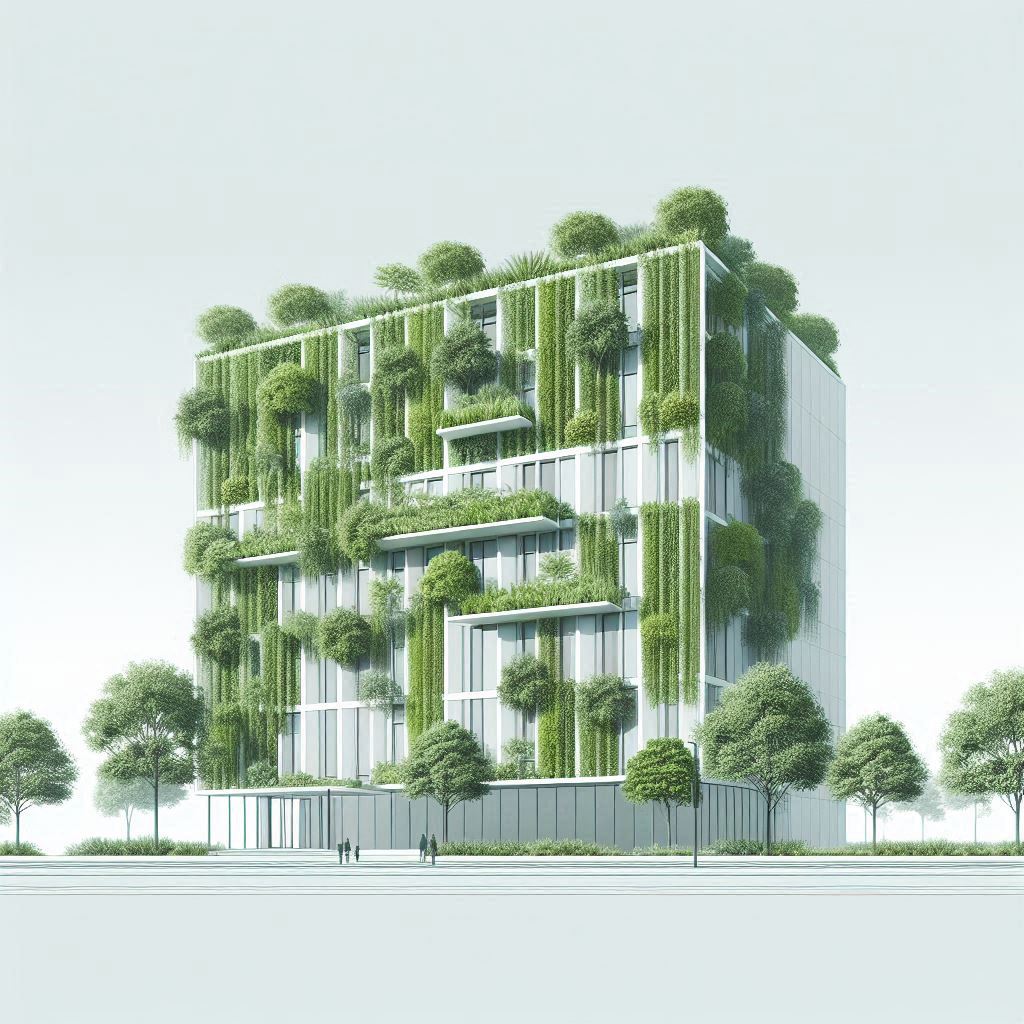
This research demonstrates that vertical greening systems significantly reduce building energy consumption and carbon emissions by enhancing insulation, lowering cooling loads, and sequestering CO₂, making them a powerful tool for sustainable urban development.
As urbanization grows, so does our energy consumption and carbon footprint. 🏙️ Buildings alone account for a significant percentage of global energy use and CO₂ emissions, making energy-efficient solutions essential. Enter Vertical Greening Systems (VGS)—a sustainable technology that transforms building facades into lush green walls. But are these green walls just for aesthetics, or do they truly help reduce energy consumption and carbon emissions? 🌿🔋
This recent study dives deep into the impact of VGS on building energy consumption and carbon emissions. Using simulations across four different climate zones in China—Xi’an, Shanghai, Guangzhou, and Kunming—the research uncovers just how effective vertical greening can be in making our cities more sustainable. Let’s explore the findings! 👇
A Vertical Greening System (VGS) refers to planting vegetation directly on building facades, creating a living green wall. These systems:
✅ Reduce solar radiation heat by providing natural shade 🌞
✅ Improve insulation by adding a layer of plants 🌿
✅ Reduce energy consumption by lowering cooling needs ❄️
✅ Sequester carbon dioxide (CO₂) through plant photosynthesis 🌍
The study analyzed Virginia Creeper, a common climbing plant, to assess how its growth affects building energy use and carbon emissions. 📊
The researchers used EnergyPlus 9.2.0 software to simulate the energy impact of VGS on a typical three-story office building in different climates. The results? Buildings with VGS consumed significantly less energy! 🔽
🏙️ Xi’an (Cold climate): 1.2% reduction
🌆 Shanghai (Hot summer, cold winter): 3.1% reduction
🌞 Guangzhou (Hot summer, mild winter): 8.7% reduction
🏔️ Kunming (Temperate climate): 4.0% reduction
The cooling effects were most significant in Guangzhou, where air conditioning runs for the longest period. The denser the green coverage (higher Leaf Area Index or LAI), the better the insulation effect. 📉❄️
🌱 Takeaway: Buildings in hot and humid climates benefit the most from VGS! 🔥➡️🌿
Since HVAC (heating, ventilation, and air conditioning) systems rely on electricity, reducing their usage cuts carbon emissions. The study found that VGS helped lower indirect carbon emissions, especially in areas with high cooling needs.
🏙️ Xi’an: 178 kgCO₂
🌆 Shanghai: 424 kgCO₂
🌞 Guangzhou: 1105 kgCO₂
🏔️ Kunming: 216 kgCO₂
💡 Fun fact: The carbon savings in Guangzhou alone is equivalent to planting over 50 trees per building each year! 🌳✨
Plants naturally absorb CO₂ through photosynthesis. The study measured how much carbon Virginia Creeper could sequester annually.
🏙️ Xi’an: 520 kgCO₂
🌆 Shanghai: 730 kgCO₂
🌞 Guangzhou: 1558 kgCO₂
🏔️ Kunming: 1609 kgCO₂
💚 Best case: In Kunming, the total carbon sequestration reached 1609 kgCO₂ per year, highlighting the power of vertical greenery!
🌿 Takeaway: Combining energy savings + carbon absorption makes VGS a super-efficient tool for urban sustainability! 🏙️💚
The study reveals promising benefits, but there’s room for improvement! Here’s what future developments could focus on:
📌 Expanding plant selection: Some species are better at CO₂ absorption and cooling effects than others! 🌱🌾
📌 Optimizing growth cycles: Studying how plants behave in different seasons can improve efficiency. 🍂🌿
📌 Integrating smart technologies: Combining sensors and AI to monitor plant health can maximize benefits. 🤖📊
📌 Policy incentives: Governments should promote green infrastructure with subsidies and urban planning policies. 🏛️💰
Vertical Greening Systems aren’t just about making buildings look beautiful—they are an effective, sustainable solution for cutting energy use and lowering carbon emissions. 🌿✨
🔥 Key takeaways:
✅ Saves energy: Reduces cooling loads up to 8.7%
✅ Lowers carbon emissions: Up to 2663 kgCO₂ saved annually
✅ Improves air quality: Plants naturally filter pollutants
✅ Increases comfort: Lowers indoor temperatures and enhances well-being 😊
With the right policies and increased awareness, VGS can play a huge role in making cities more eco-friendly and helping us achieve carbon neutrality! 🌍💚
🔹 Vertical Greening System (VGS) – A system where plants grow on building walls, providing insulation, reducing heat, and absorbing CO₂. 🌱🏢
🔹 Leaf Area Index (LAI) – A measure of plant density; higher LAI means more leaves, better insulation, and more CO₂ absorption. 🍃📊 - This concept has also been explored in the article "🌾 Revolutionizing Wheat Farming: Machine Learning Meets Precision Agriculture in Pakistan 🌍".
🔹 Carbon Sequestration – The process by which plants absorb CO₂ from the air during photosynthesis, helping to reduce greenhouse gases. 🌍💚 - This concept has also been explored in the article "🌍 The Path to Net Zero: How Regions Can Lead the Carbon Neutrality Race".
🔹 HVAC (Heating, Ventilation, and Air Conditioning) – The system that controls indoor temperature; using VGS can reduce its energy consumption. ❄️🔥 - This concept has also been explored in the article "🌿 Supermarkets Go Green: Revolutionizing Energy Efficiency in Food Retail 🏪".
🔹 EnergyPlus – A simulation software used to model and analyze building energy use and efficiency. 🏗️🔬
Source: Mi, H.; Wang, S.; Wang, T.; Li, T. The Influence of Vertical Greening Systems on Building Energy Consumption and Comprehensive Carbon Emission. Buildings 2025, 15, 471. https://doi.org/10.3390/buildings15030471
From: Gansu Institute of Architectural Design and Research Co.; Zhengzhou University of Science and Technology; Wuhan University of Science and Technology.